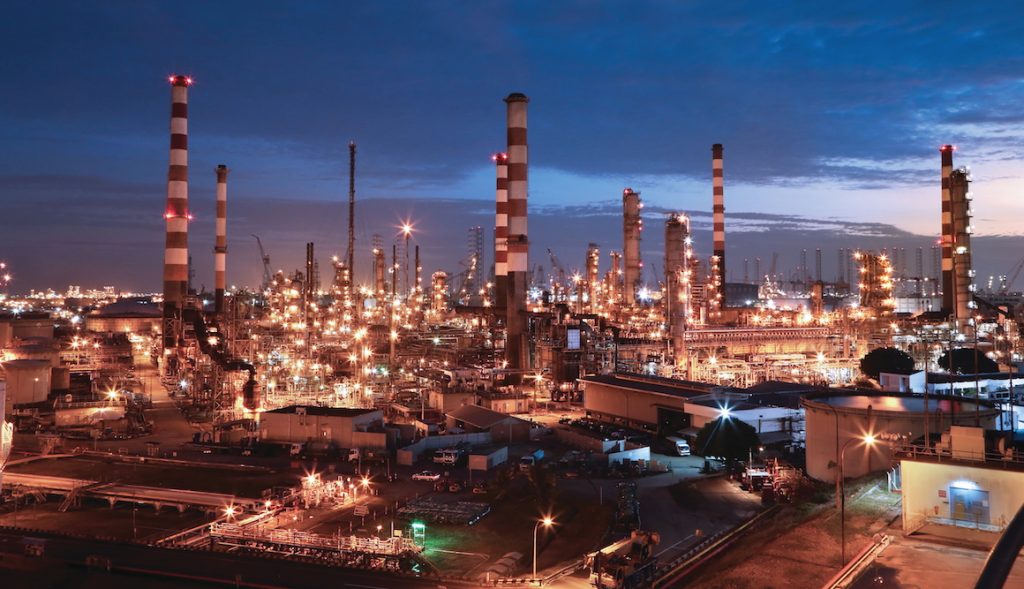From voice recognition and machine learning to intelligent energy efficiency, ExxonMobil’s chemical and refining plants are installing a number of “smart technology upgrades” targeted at reducing emissions, improving productivity and increasing energy efficiency across Asia Pacific and beyond.
In Singapore, ExxonMobil has been making continued improvements at its integrated complexes, driving energy efficiency and increasing safety with smart technologies.
These technologies are aimed at increasing energy efficiencies in manufacturing activities and have the potential to help ExxonMobil meet its 2025 emission reduction plans, a key step in aligning with the goals of the Paris Agreement.
An energy-efficient ‘GEM’
How we use energy is just as important as how it is generated, so using energy in smarter ways can help reduce carbon dioxide emissions.
Energy efficiency has been an ongoing focus for ExxonMobil’s Singapore operations. In the last two decades, its integrated refining and petrochemical complex has improved energy use by 25 per cent after it implemented a Global Energy Management System (GEMS). This improvement is equivalent to removing the carbon emissions of more than half a million cars in the city-state.

The Singapore Refinery is ExxonMobil’s largest.
The continuous energy efficiency improvements have come about not just through hardware investments, like the complex’s 440-MW cogeneration facilities – producing high-temperature heat and electricity from a single source, but also from technology that enables better remote real-time monitoring and management of operating parameters.
The teams in Singapore have also taken digitalisation to the sky, using drones to carry out inspections of enormous towers, as well as fly inside holding tanks.
This means workers no longer need to climb up or spend as much time in these structures, increasing safety and productivity.
These improvements in equipment maintenance also result in more reliable and efficient operations and lower emissions.
Intelligent improvements across the world
But it’s not just Asia Pacific where these digital gains are being made.
Engineers and technology experts at ExxonMobil are applying the latest in assistance software, including artificial intelligence, to improve manufacturing efficiencies at the company’s chemical and refining plants across the world.
Similar to a driver turning on their GPS to navigate traffic or using a smartphone to organise their day, plant operators at ExxonMobil’s Baton Rouge and Baytown refineries in the US are piloting new, intelligent tools able to recommend more ideal operating conditions or isolate an improvement needed in their complex decision making. These advancements could decrease energy use and reduce greenhouse gas emissions.
Here are three more advancements being developed or piloted around the world to revolutionise energy and chemicals production.
What’s that in the sky? Cognitive “Computer Vision” can tell us.
Imagine a computer program able to detect and reduce visible emissions, like particulate matter. Engineers have turned this bold idea into a reality with Cognitive “Computer Vision,” a program that provides chemical plant operators with the big data-powered ability to “see” and reduce visible emissions from flares by improving operating conditions. The technology will play a part in helping ExxonMobil reduce visible emissions from flares, as well as potential greenhouse gas emissions.
Meet Sofia, ExxonMobil’s Intelligent Operations Assistant.
Each day, smart assistant Sofia, Greek for “wisdom,” scours and analyses vast quantities of data, things like crude oil production rate and plant unit pressure, to help refineries operate efficiently by producing more with less energy and hence reducing emissions in the process.
Powered by artificial intelligence (AI) and voice recognition software, Sofia supports operators in the control room by helping them optimise daily production of high-value fuels and chemicals. By asking Sofia some pointed questions, operators can locate a piece of equipment not functioning at its best, such as a distillation unit not operating at its optimal temperature. It can also detect opportunities to speed up production. And most importantly, Sofia is self-learning, meaning that the more it assists operators, the better and more sophisticated it becomes at answering their questions.
Follow the “SmartLane” Artificial Intelligence guide
Manufacturing essential feedstock for products like face masks, surgical gowns and hand sanitiser requires quick adjustments to maintain the optimal temperature and the speed of chemical reactions in real-time. That’s why ExxonMobil engineers developed “SmartLane.” Much like a GPS guides drivers to the most direct route, while avoiding traffic slowdowns, so too does SmartLane – except instead of calculating routes, it shows operators the optimal levels of a chemical ingredient needed to manufacture a specific product. The result is an energy-efficient plant where consistently optimal operations can save energy and time, which ultimately have the potential to reduce ExxonMobil’s GHG emissions footprint as compared to current operations.
Looking forward
Cutting down global emissions will take a portfolio of innovations, including scaled-up carbon capture and storage, lower emission biofuels and energy-efficient technologies. Smart devices like Computer Vision, Sofia and SmartLane are part of this complex effort and are providing operators with the critical tools they need to do much more with much less energy. In doing so, these tools are becoming one more part of the solution energy-efficient manufacturing.
Learn more about how ExxonMobil is working towards an energy-efficient, reduced-carbon future.




